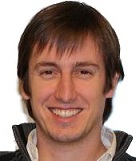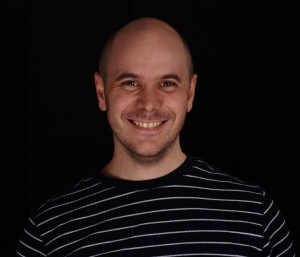Der Rückblick zum TEWI-Kolloquium von Max Mühlhäuser am 26.01.2015 beinhaltet die Videoaufzeichnung sowie die Folien:
Video
[iframe height=“350″ src=“http://video.aau.at/video.php?video=ftf_muehlhaeuser.mp4″]
Slides
Abstract:
Ever more multimedia data gets produced, stored, and shared. This is a well-known phenomenon and quite common for information technology, one might say, but multimedia as a field of computing has always been aiming at humans rather than computers as ultimate consumers: computing was mostly an auxiliary on the path from media creation to human consumption. Despite increasing automation, human consumption is likely to remain the dominating multimedia use case. Since humans have rather fixed sensing and processing capabilities, the dramatic increase in multimedia data production and online availability poses particular “ multimedia big data“ challenges – the more so since the characteristics of multimedia make the well-known „four V“ of big data particularly virulent.
In light of the aforementioned development, the talk will look at big data challenges for multimedia and at upcoming approaches to meeting these challenges. The problem space will be structured according to an imaginary „processing pipeline“ that starts from media capturing via networking and storage/processing until presentation/consumption. Some nonfunctional aspects such as privacy will be addressed, too.
Bio: Max Mühlhäuser is a Full Professor of Computer Science at Technische Universität Darmstadt, Germany, and head of the Telecooperation Lab. In 1986, he received his Doctorate from the University of Karlsruhe and soon afterwards founded the first European research center for Digital Equipment Corp. (DEC). Since 1989, he worked as either professor or visiting professor at universities in Germany, Austria, France, Canada, and the US. Max published more than 450 articles, co-authored and edited books about Ubiquitous Computing, E-learning, and distributed & multimedia software engineering. Max is deputy speaker of a nationally funded cooperative research center on the Future Internet and directorate member of the Center for Advanced SEcurity research Darmstadt (CASED).



 Abstract: In this talk I’ll discuss some ideas about the reasons, both technical and business-related why we care about Quality of Experience (QoE). I’ll present some results related to QoE-driven network and application-level management, and first steps into economically exploiting QoE models, in particular concerning Service Level Agreements, as well as some enablers for doing so.
Abstract: In this talk I’ll discuss some ideas about the reasons, both technical and business-related why we care about Quality of Experience (QoE). I’ll present some results related to QoE-driven network and application-level management, and first steps into economically exploiting QoE models, in particular concerning Service Level Agreements, as well as some enablers for doing so.